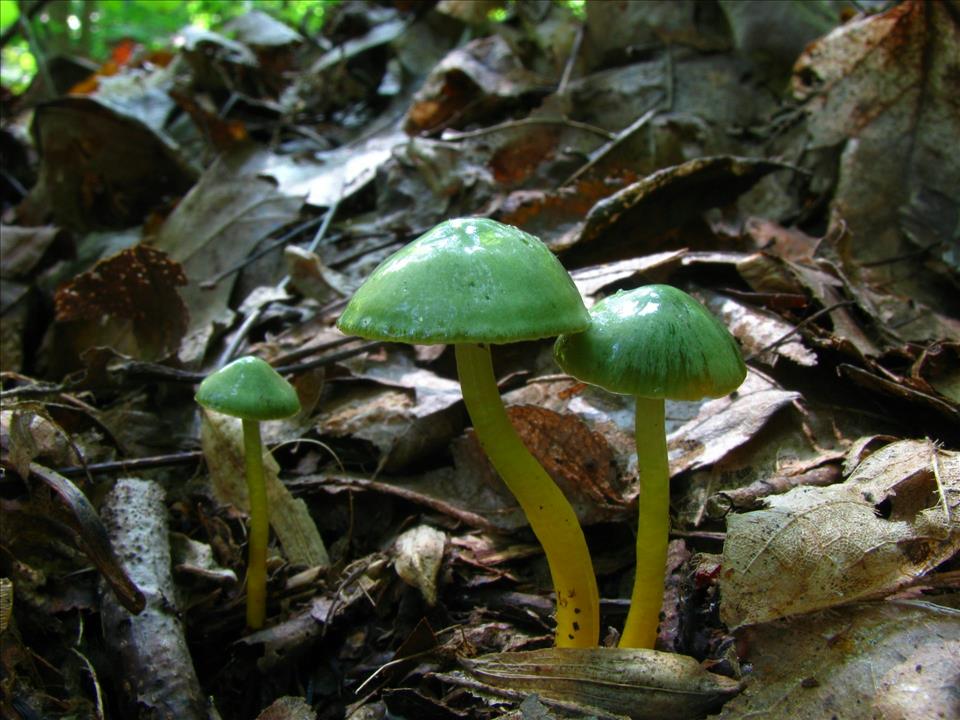
Why Autumn 2024 Is Your Best Chance To See Lots Of Weird And Wonderful Fungi
Numerous languages have a saying to the effect of“growing like mushrooms after the rain”. Indeed, rainfall across the year is a major factor in the prevalence of mushrooms. These are the short-lived structures we see poking above the soil that fungi use for reproduction. The rest of the fungus is actually there all the time, growing within the soil in a web of filaments known as mycelium .
Similar to the way plants spread their offspring via seeds, fungi produce mushrooms to release spores that can be carried on the wind or spread by animals. As with any organism's reproduction, it costs the fungus a lot of energy to make mushrooms, so its decision to make this investment will be attuned to when it is likely to have the best chance of success.
Spores need moisture to germinate, and it generally helps if it's not too cold. Autumn in the temperate climate found across much of Europe usually provides these conditions in abundance. Add in a mild, wet summer to get things started and that's why we're probably looking at a bumper autumn for wild mushrooms in 2024.
Do the seasons feel increasingly weird to you? You're not alone. Climate change is distorting nature's calendar, causing plants to flower early and animals to emerge at the wrong time.
This article is part of a series, Wild Seasons , on how the seasons are changing – and what they may eventually look like.
How to make the most of itSome of the most prized gourmet mushrooms can be foraged in autumn, like chanterelles or porcini . When done responsibly , it's a great hobby. But foragers beware: there has been an influx of mushroom identification books written by generative-AI and riddled with (potentially deadly) errors, so always get information about edible mushrooms from a safe and reliable source.
Chanterelle mushrooms are edible (and delicious). lzf/Shutterstock
If you ever feel tempted to pick something without being certain what it is, remember the adage:“there are old mushroom hunters and there are bold mushroom hunters, but there are no old bold mushroom hunters”. Never munch on a hunch.
Autumn is the most productive season for mushrooms in temperate regions, though spring is fruitful too ; St George's mushroom was named for its tendency to appear around April 23. It's also not only mushroom-forming fungi that have these seasonal and weather-driven patterns. Cases of a nasty lung infection called valley fever in the south-western US are caused by the microscopic Coccidioides soil fungi. They peak in the autumn, with particular surges in years following wet winters.
Read more: Fungal infections known as valley fever could spike this fall - 3 epidemiologists explain how to protect yourself
Considering fungi are so dependent on weather and temperature, it's not surprising that the timing and overall length of mushroom production is being affected by climate change. This mirrors the shifts in seasonal patterns for plants and animals .
While an extended mushroom season could sound like good news to foragers, unfortunately, changing conditions may make fungal diseases like valley fever a bigger problem . And as extreme floods become more common, exposure to mould fungi will probably become a more pressing health issue in homes.
Mushrooms are full of water, so wet autumn weather tends to favour fungi. Sergei Kochetov/Shutterstock
Fungi aren't just rain-lovers, though, they're actually also rain-makers . Spores released into the atmosphere from fungi can act as a surface on which moisture in the air can form water droplets, and when this happens on a large scale it can contribute to the formation of clouds.
This is just one example of the many underappreciated ways that fungi support our environment. Come rain or shine, I hope that you have the opportunity to get out into nature this autumn and enjoy the fungi.

Legal Disclaimer:
MENAFN provides the
information “as is” without warranty of any kind. We do not accept
any responsibility or liability for the accuracy, content, images,
videos, licenses, completeness, legality, or reliability of the information
contained in this article. If you have any complaints or copyright
issues related to this article, kindly contact the provider above.


















Comments
No comment